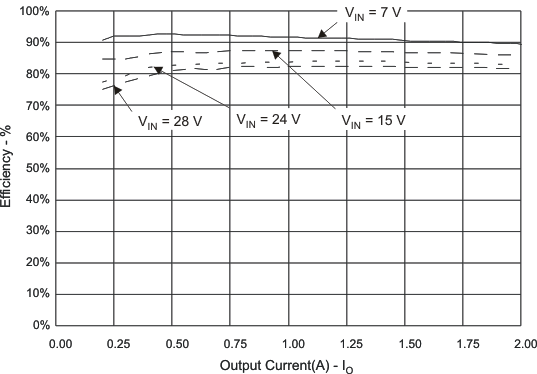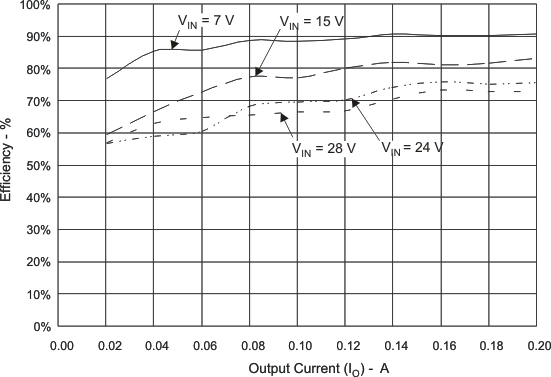SLVU263A August 2008 – October 2021 TPS54231
2.2 Efficiency
The efficiency of this EVM peaks at a load current of about 0.5 A - 1 A and then decreases as the load current increases towards full load. Figure 2-1 shows the efficiency for the TPS54231EVM-372 at an ambient temperature of 25°C.
 Figure 2-1 TPS54231EVM-372 Efficiency
Figure 2-1 TPS54231EVM-372 EfficiencyFigure 2-2 shows the efficiency for the TPS54231EVM-372 at lower output currents between 0.02 A and 0.20 A at an ambient temperature of 25°C.
 Figure 2-2 TPS54231EVM-372 Low Current Efficiency
Figure 2-2 TPS54231EVM-372 Low Current EfficiencyThe efficiency may be lower at higher ambient temperatures, due to temperature variation in the drain-to-source resistance of the internal MOSFET.